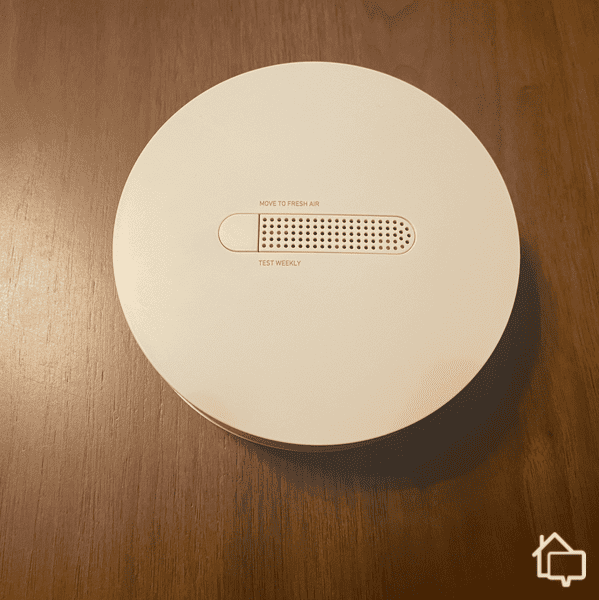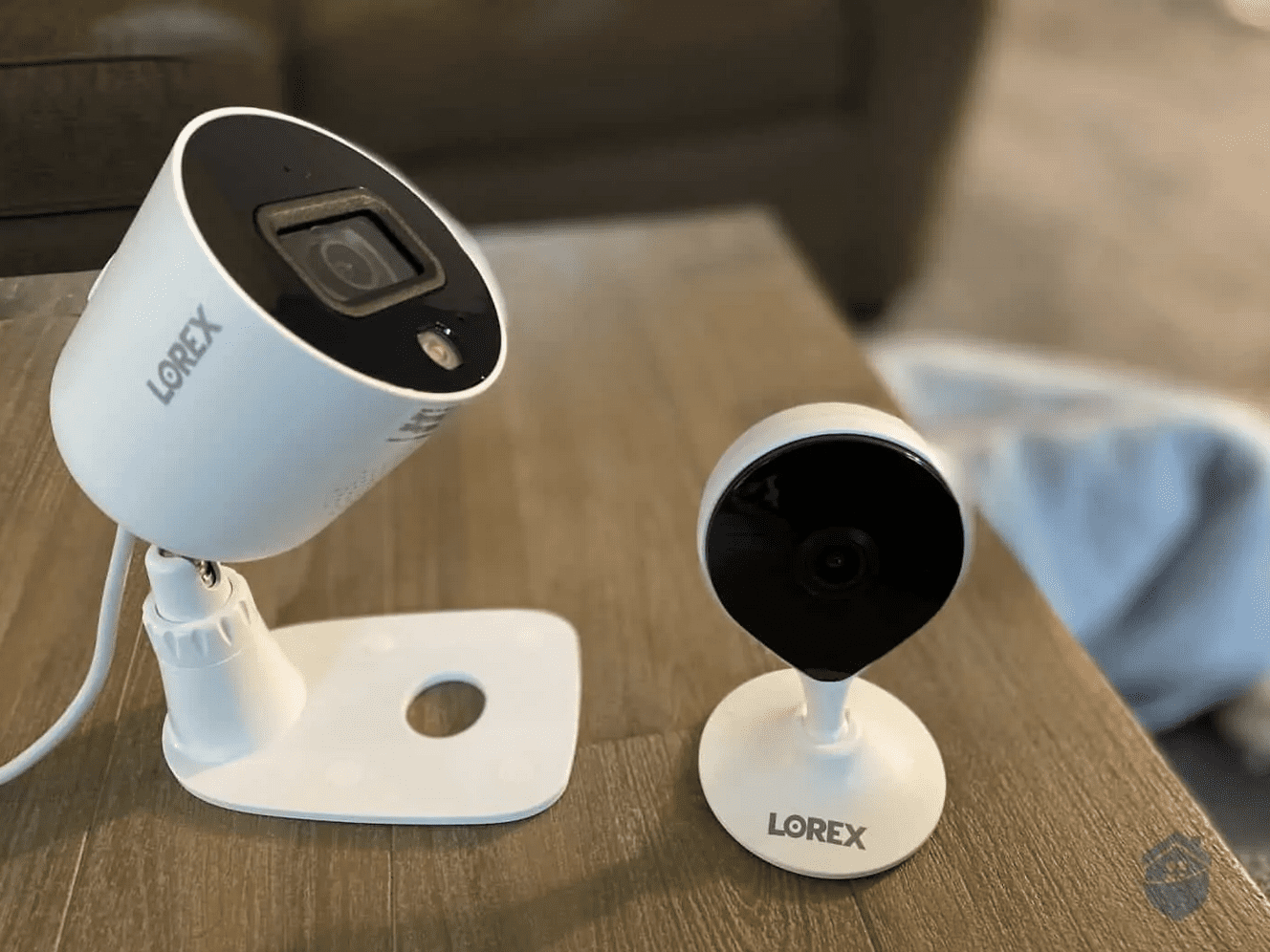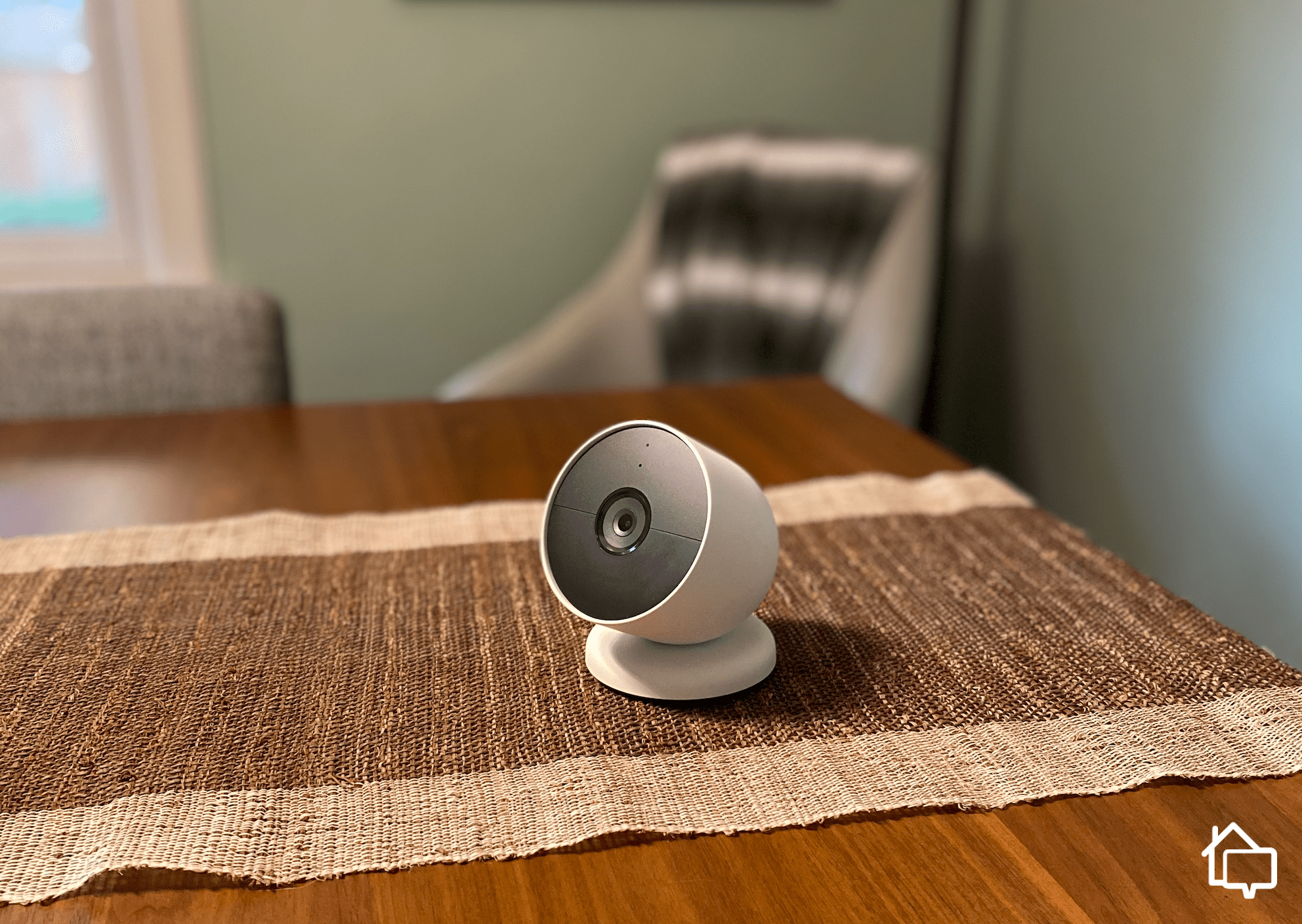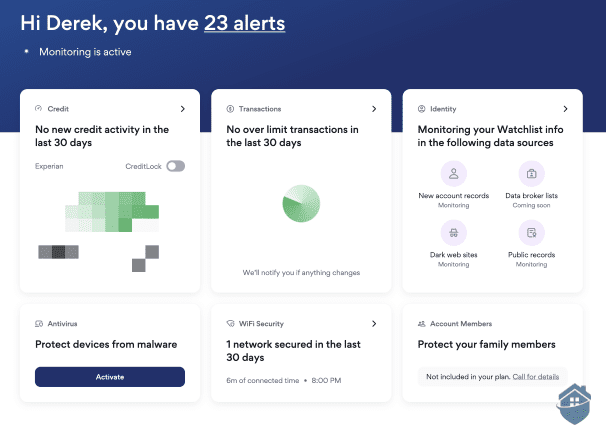As of 2025, about 32.6 million Americans work remotely.1 With this shift in work setups comes new safety and security concerns. You might be worried about cyberthreats, physical threats like break-ins and equipment theft, or just want to avoid injury while working long hours at your desk. If that’s you, you’re in the right place!
This guide put together by our security experts will walk you through everything you need to know to make your home office safe, comfortable, and efficient. We’ll discuss strategies like using a VPN to secure your digital workspace, as well as physical security measures like smart locks to secure your home office. Let’s get started.
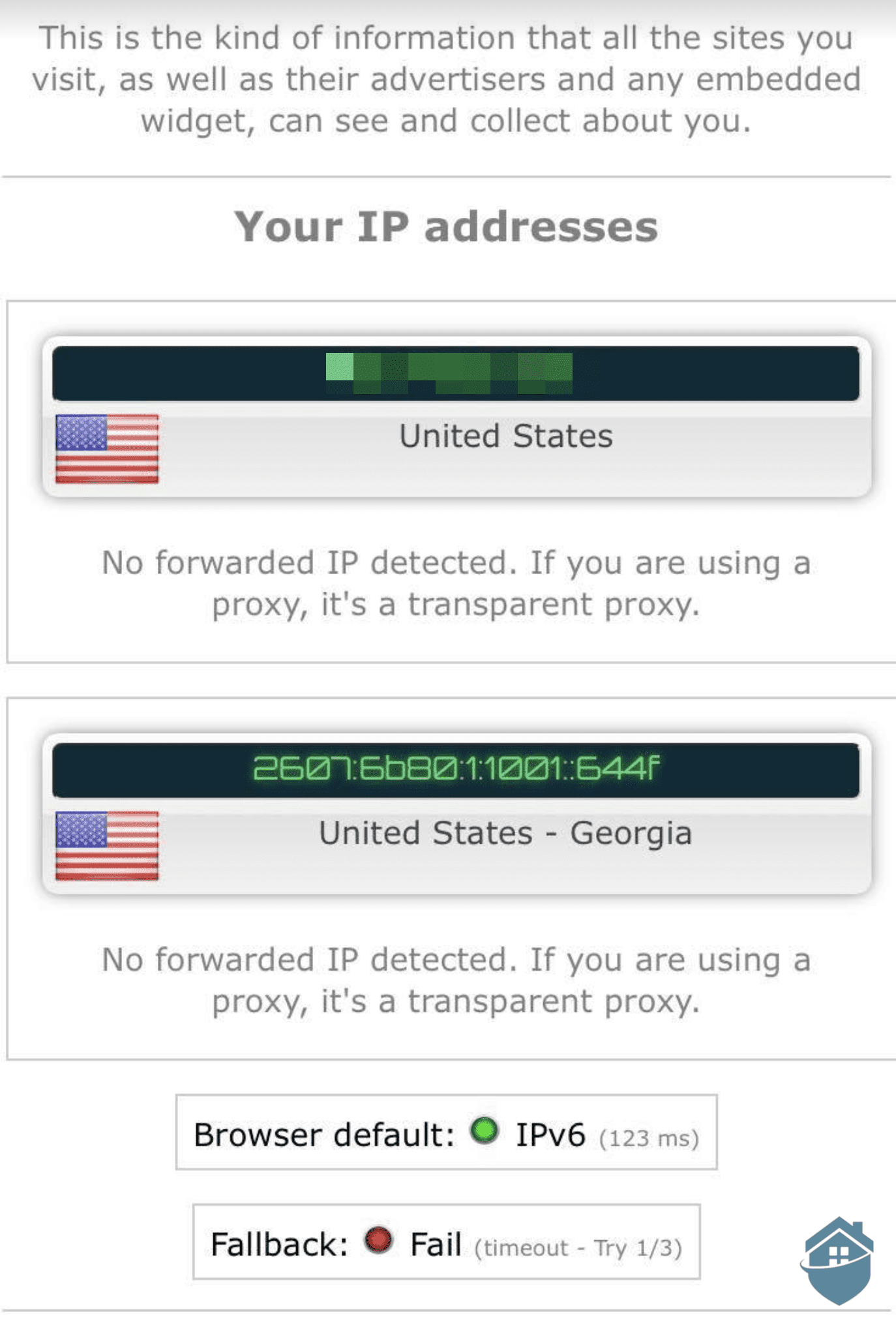
A VPN encrypts your internet connection, keeping your data secure when you’re working from home.
Digital Security Essentials
A good place to start is with the devices you use everyday for work. It might be a laptop, tablet, or smartphone. Regardless, you should implement these digital security strategies to keep them safe from hacking and other cyberthreats.
Network Security and Internet Protection
Your network connects you to the internet, making network security your first line of defense against cyberthreats. The problem is, most home routers ship with default settings that prioritize convenience over security, leaving your network vulnerable to unauthorized access.
We recommend securing your Wi-Fi network using WPA3 encryption, which is the latest (and thus most secure) protocol. If your router doesn’t support WPA3, WPA2 also provides adequate protection.
Next, change your router’s default administrative password immediately. This is the password used to access your admin panel, which is where you control features such as setting your Wi-Fi password. Most routers ship with a default admin password, which cybercriminals can easily Google.
Expert Advice: If your router’s default Wi-Fi name (SSID) is its make and model, make sure to change it as well. Cybercriminals may be able to use that information to search for known vulnerabilities.
Once your router is ready, use the admin dashboard to create a separate network for your home office. All your work equipment should connect to this network only. Segmenting your home network prevents potential security breaches from spreading to your work devices. We also recommend setting up a separate guest network. With this, you’ll be able to provide internet access to visitors without sharing your home office or primary network password.
Device Security and Access Control
After securing your network, secure your work equipment next. Any vulnerability in each device can give cybercriminals access to your workstation. That’s why a comprehensive defense strategy requires individual security measures for your laptops, desktop computers, tablets, and smartphones.
First, enable automatic software updates on all devices to ensure you receive critical security updates. Configure updates to install during off-hours to avoid workflow interruptions. Both Windows and macOS offer granular update controls that allow automatic security updates while requiring manual approval for major system changes.
Next, implement strong authentication methods across all devices and accounts. We recommend using two-factor authentication (2FA) and authenticator apps like Authy or Microsoft Authenticator rather than SMS-based codes, which can be intercepted through SIM swapping attacks.
FYI: You should also set up device encryption to protect data if equipment is stolen or lost. FileVault for Mac and BitLocker for Windows provide full-disk encryption that renders data unreadable without proper authentication credentials.
Password Management and Data Protection
Weak passwords are the leading cause of data breaches, with over 46-percent of Americans reported having their password stolen in 2024.2 Having a comprehensive password management strategy eliminates this vulnerability while improving your daily workflow.
Password managers generate unique, complex passwords for every account. Password managers also store passwords in an encrypted vault locked by a single master password. Our testing revealed that NordPass, Aura, and Norton offer the best combination of security features and user experience for home office environments.
Expert Tip: Test your backup restoration process quarterly to ensure data integrity and accessibility. Many users discover backup failures only when attempting to recover lost files during emergencies.
Email and Communication Security
Phishing attacks, malware attachments, and business email compromise schemes specifically target remote workers who lack corporate email security protections. Configure your email client to display sender information prominently and disable automatic image loading to prevent tracking pixels.
We also recommend verifying senders before clicking links or downloading attachments, especially for unexpected messages requesting urgent action or sensitive information. You should also secure your video conferencing and communication platforms with meeting passwords, waiting rooms, and participant authentication. Zoom, Microsoft Teams, and Google Meet all offer security features that can help prevent unauthorized access to confidential data.
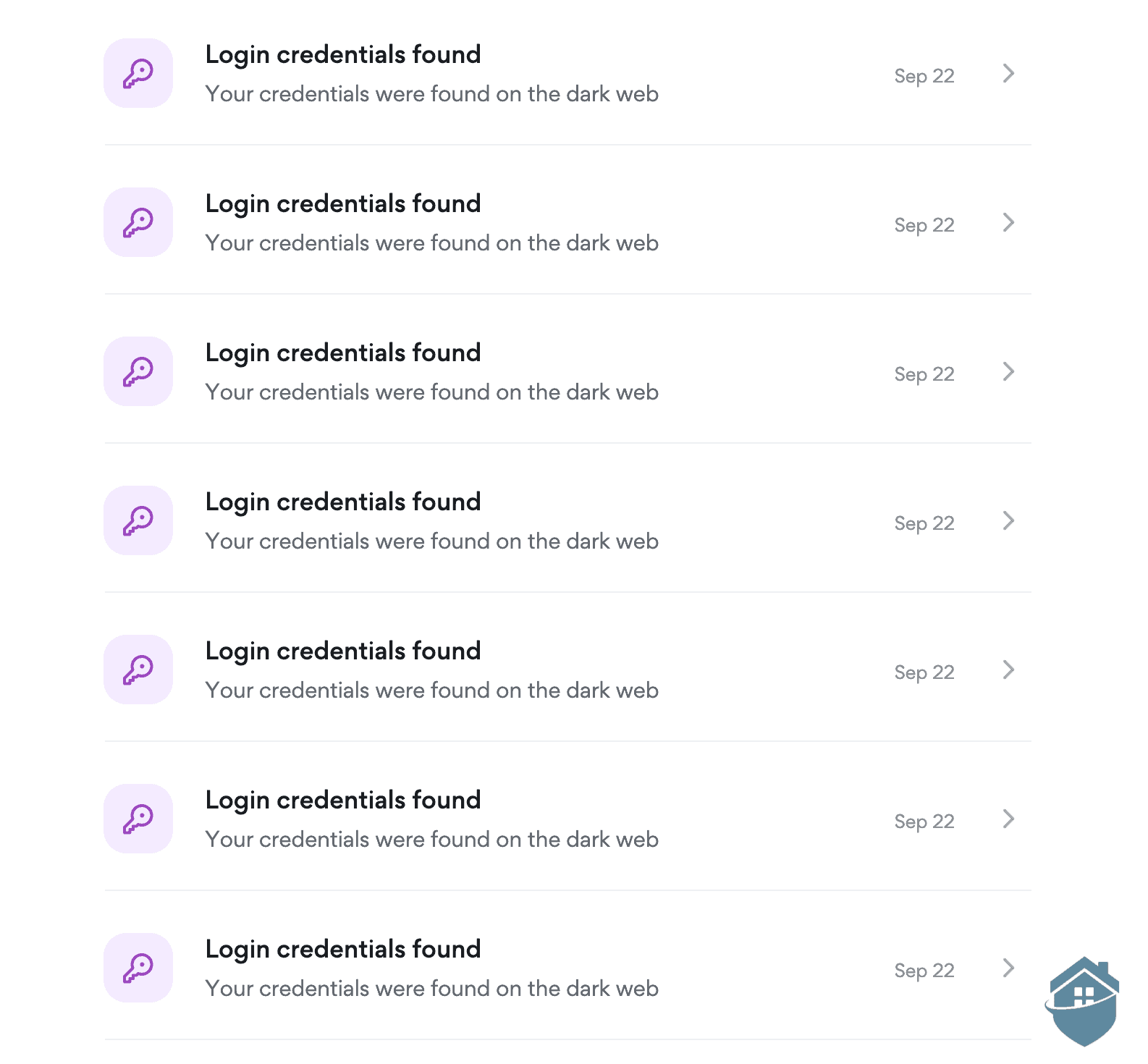
We also recommend scanning the dark web and changing login credentials immediately if your data has been leaked.
Physical Security Measures
While you might believe your house is more secure when you’re working from home, we still recommend taking steps to protect it. Some of the best home security systems even include self-monitoring plans, so you can save money and take action when you need to.
Access Control and Entry Points
We recommend installing quality deadbolt locks on any exterior doors providing access to your home office area. Grade 1 deadbolts certified by the American National Standards Institute (ANSI) offer the highest residential security rating and resist common break-in techniques like lock bumping and drilling.
You should consider smart locks for enhanced access control and monitoring capabilities. We also recommend secure ground-floor windows with additional locking mechanisms and entry sensors. Whenever a door or window opens, you’ll get a notification. You can then bring up the security camera feed to see if it’s an intruder.
>> Learn More: How Do Door Alarm Sensors Work?
Pro Tip: Position your most valuable equipment away from windows to reduce visibility from outside. Thieves often conduct surveillance before attempting break-ins, targeting homes with visible high-value electronics.
Equipment Protection and Theft Prevention
Desktop computers, monitors, printers, and networking equipment can easily exceed $5,000 in total value, making your office an attractive target for criminals. Use cable locks to secure laptops and portable devices to heavy furniture or dedicated anchor points.
Install a small safe or locking file cabinet for storing backup drives, important documents, and portable valuables. Fire-resistant safes protect against both theft and natural disasters, providing comprehensive protection for irreplaceable business records and personal documents.
>> Keep Reading: Storing Important Documents
Surveillance and Monitoring Systems
Modern security cameras provide affordable monitoring capabilities that rival professional systems. Our testing revealed that the best indoor security cameras are from ADT and Lorex. They offer the best balance of image quality, reliability, and ease of installation for home office environments. Both systems provide smartphone alerts, two-way audio communication, and integration with popular smart home platforms.
We recommend positioning cameras to monitor entry points and high-value equipment areas without violating privacy expectations of family members or neighbors. Indoor cameras should focus on workspace areas, while outdoor cameras should cover approaches to your home office entrance.
Expert Tip: Check local privacy laws before installing cameras that might capture neighbors’ property or public areas. Some jurisdictions require disclosure notices or limit camera placement options.
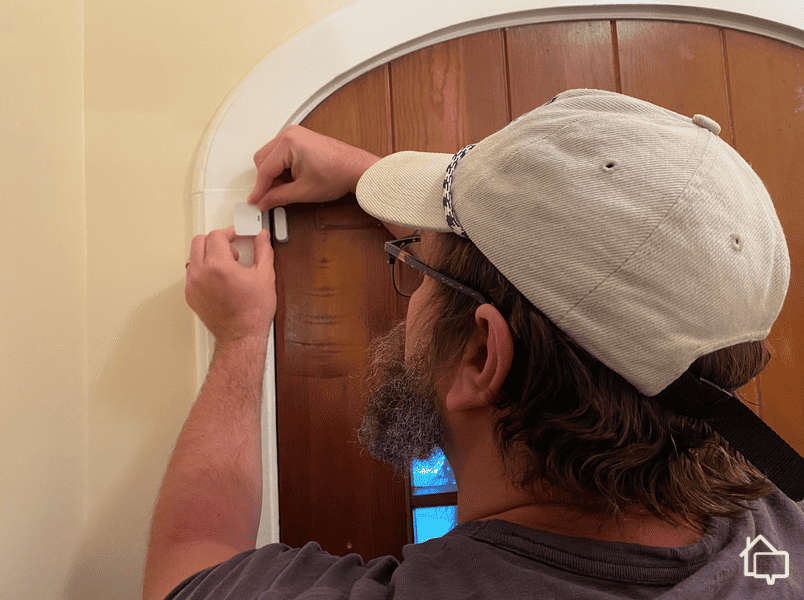
We have entry sensors on our front door, since our home office is at the back of the house.
Workplace Safety and Health
Beyond software and security equipment, you need to have healthy habits to stay safe while working at home. These are some of our personal recommendations.
Ergonomics and Workspace Setup
Poor ergonomics contribute to workplace injuries that affect millions of remote workers annually. Make sure you’re positioning your monitor at arm’s length with the top of the screen at or below eye level. This reduces neck strain and eye fatigue during extended work sessions. If you use a laptop as your primary display, invest in an external monitor or laptop stand to achieve proper viewing angles.
Select an adjustable office chair that supports the natural curve of your spine. Your feet should rest flat on the floor. Your thighs should also be parallel to the ground, and your arms should be positioned comfortably at keyboard height. And be sure to take regular movement breaks to prevent repetitive strain injuries.
You can use this table as a checklist to ensure your workplace is well-designed.
| Ergonomic Element | Proper Positioning | Common Mistakes |
|---|---|---|
| Monitor | Top at eye level, arm’s length away | Too high, too close, off to side |
| Keyboard | Elbows at 90 degrees, wrists straight | Reaching up or down, bent wrists |
| Chair | Supports lower back, feet flat on floor | No lumbar support, improper height |
| Lighting | Even illumination, no glare | Harsh overhead light, screen glare |
Fire Safety and Emergency Preparedness
You’ll want to install smoke detectors within ten feet of your home office area and test batteries monthly. Interconnected smoke alarms provide the earliest warning by activating all units when one detects smoke or fire. Many home security systems integrate smoke and carbon monoxide detectors that blare and send notifications, in case you’re out for lunch.
You should also maintain proper spacing around electrical equipment to ensure adequate ventilation and heat dissipation. Power strips and surge protectors should never be daisy-chained or overloaded beyond their rated capacity. Use surge protectors with indicator lights that confirm proper grounding and protection status. Finally, create and practice an emergency evacuation plan that includes multiple exit routes from your home office area.
Expert Tip: Replace surge protectors every three to five years or immediately after they absorb a significant electrical surge. Many units lose protection capability over time without obvious external indicators.
>> Learn More: Residential First Prevention and Safety Guide
Air Quality and Environmental Health
Indoor air quality significantly impacts productivity, health, and cognitive function during extended work periods. Poor ventilation, chemical off-gassing from furniture and equipment, and inadequate humidity control can create uncomfortable and unhealthy working conditions.
We recommend ensuring adequate ventilation in your home office space via natural or mechanical means. In our office, we open windows on sunny days and use exhaust fans on colder days when we need fresh air. Another alternative is air purification systems if the outdoor air quality is poor in your area or if you suffer from allergies. HEPA filtration removes 99.97% of particles larger than 0.3 microns. These particles include dust, pollen, and some bacteria.
Monitoring humidity levels to maintain comfort and prevent equipment damage is also important. We recommend an indoor humidity from 30% to 50%, which minimizes static electricity buildup while preventing mold growth and respiratory irritation.
Lighting and Visual Comfort
Proper lighting reduces eye strain, improves productivity, and creates a more pleasant working environment. For example, overhead lighting creates harsh shadows and uneven illumination that contributes to visual fatigue. We recommend implementing layered lighting using ambient, task, and accent sources. Overhead fixtures provide general illumination, while desk lamps offer focused light for detailed work. You’ll want to position light sources to minimize glare on computer screens and reflective surfaces.
Natural light provides the most comfortable illumination for most tasks, but direct sunlight can cause screen glare and uncomfortable brightness variations. Try to use adjustable window blinds to control natural light throughout the day while maintaining visibility and openness. And definitely consider full-spectrum LED bulbs that simulate natural daylight and support circadian rhythm regulation. These bulbs can help maintain alertness during daytime hours and improve sleep quality by supporting natural light-dark cycles.
Creating Your Personal Safety Protocol
Many workplaces offer guidance on how to set up your home office, but these can be a one-size fits-all solution. Instead, we recommend following these steps.
Risk Assessment and Priority Setting
Every home office faces different security and safety challenges based on location, work type, and individual circumstances. Conducting a personalized risk assessment helps prioritize safety investments and identify the most critical vulnerabilities in your workspace.
Get in the practice of evaluating your digital security posture by reviewing current password practices, software update status, and backup procedures. Use free online tools like HaveIBeenPwned to check if your email addresses appear in known data breaches, indicating compromised accounts that require immediate attention.
Be sure to also assess physical security by examining entry points, equipment visibility, and neighborhood crime statistics. Local police departments often provide home security consultations that identify specific vulnerabilities and recommend appropriate countermeasures.
>> Read More: Property and Violent Crime in America: Stats for All 50 States
Expert Tip: Document your current safety measures and create a timeline for implementing improvements. Spreading upgrades over several months makes the process more manageable and allows you to learn each system thoroughly.
Implementation Timeline and Budget Planning
Security improvements deliver the greatest benefit when implemented systematically rather than randomly. Start with free or low-cost measures that provide immediate protection, then gradually add more sophisticated solutions as budget and needs dictate.
Phase one should focus on basic digital security: updating software, enabling two-factor authentication, and implementing password management. These measures cost little or nothing but provide substantial protection against common threats.
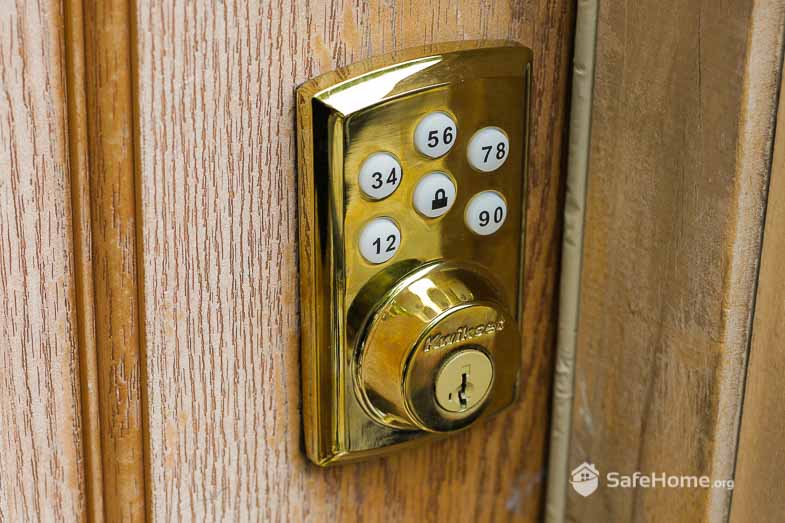
Residential smart locks like this can work as a makeshift access control system.
Phase two can include physical security upgrades like improved locks, security cameras, and equipment protection measures. Research local suppliers and contractors to compare prices and capabilities before making significant investments.
Phase three might involve advanced solutions like professional monitoring services, smart home integration, or specialized security software for high-risk environments.
>> Find Out: The Best Monitored Home Security Systems in 2025
Tick Every Box
Remember that security is an ongoing process, not a one-time setup. Regular maintenance, continuous monitoring, and staying informed about emerging threats ensure your protective measures remain effective as technology and attack methods evolve. The time and resources invested in proper home office security pay dividends through prevented losses, maintained productivity, and peace of mind that allows you to focus on your work rather than worry about potential threats.
Your home office represents both a significant investment and a critical component of your professional success. Protecting it with appropriate security measures ensures that investment continues to serve you effectively while safeguarding the sensitive information and valuable equipment that enable your remote work capabilities.
Frequently Asked Questions
- How often should I update my home office security measures?
Review and update your security measures quarterly for optimal protection. Critical software updates should be applied immediately when available.
- What's the most cost-effective way to improve home office security?
Start with strong passwords, two-factor authentication, and regular software updates—these provide significant protection at minimal cost. Physical security improvements like better locks and lighting offer excellent value for the investment.
- Do I need professional monitoring for my home office security system?
Professional monitoring isn’t essential for most home offices but provides valuable peace of mind for high-risk situations. Self-monitoring through smartphone apps offers a good balance of cost and capability for typical users.
- How can I secure my home office on a tight budget?
Focus on free security measures first: software updates, strong passwords, and basic physical security practices. Many effective security tools, including antivirus software and backup solutions, are available at no cost.
- Should I use a VPN for my home office internet connection?
VPNs provide additional security when accessing company networks or working with sensitive data. They’re particularly important when using public Wi-Fi or if your internet provider doesn’t encrypt traffic properly.
- What should I do if I suspect my home office has been compromised?
Immediately disconnect affected devices from the internet and change all passwords from a clean device. Contact your IT support team or a cybersecurity professional for assistance with incident response and recovery.


